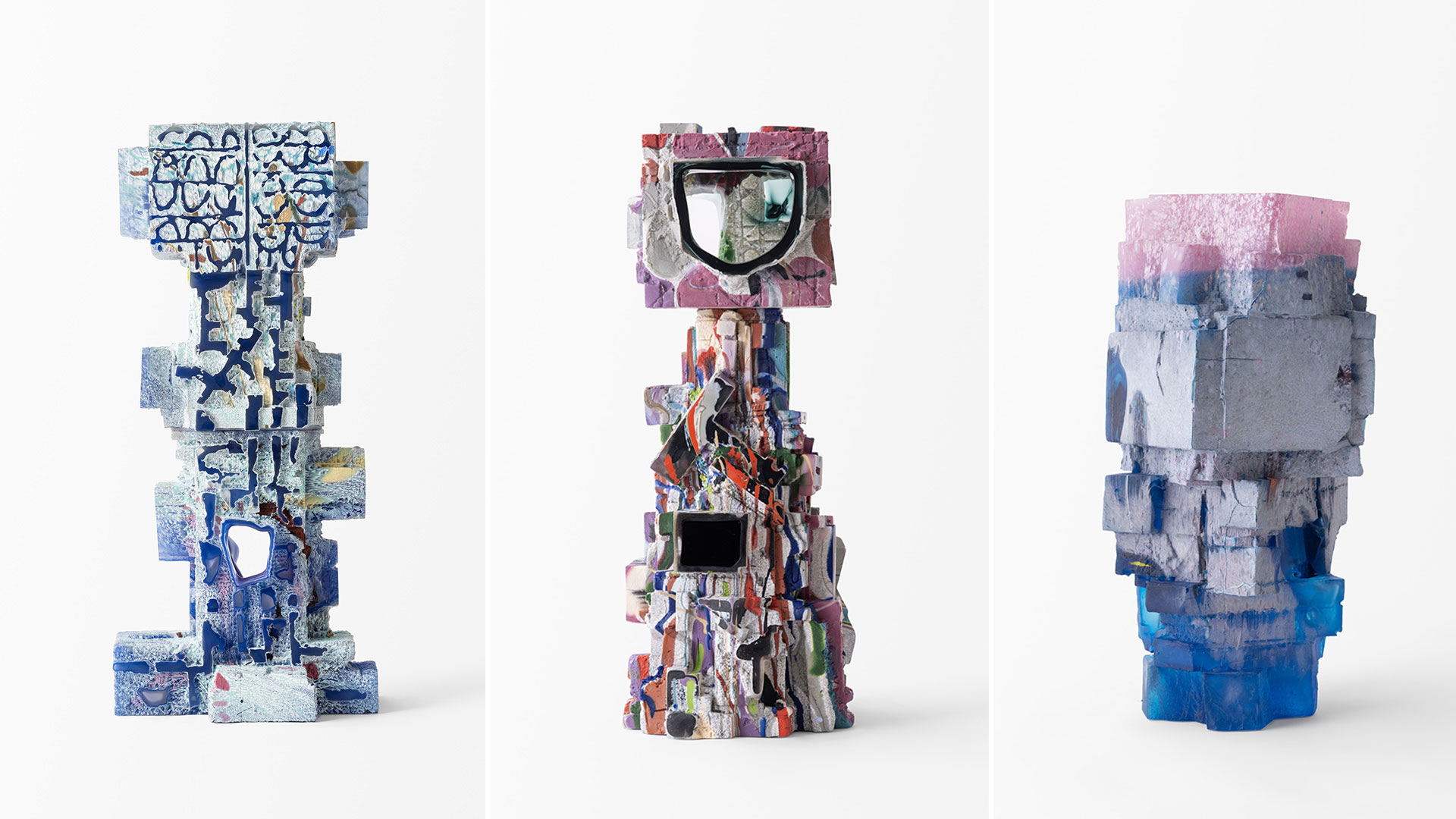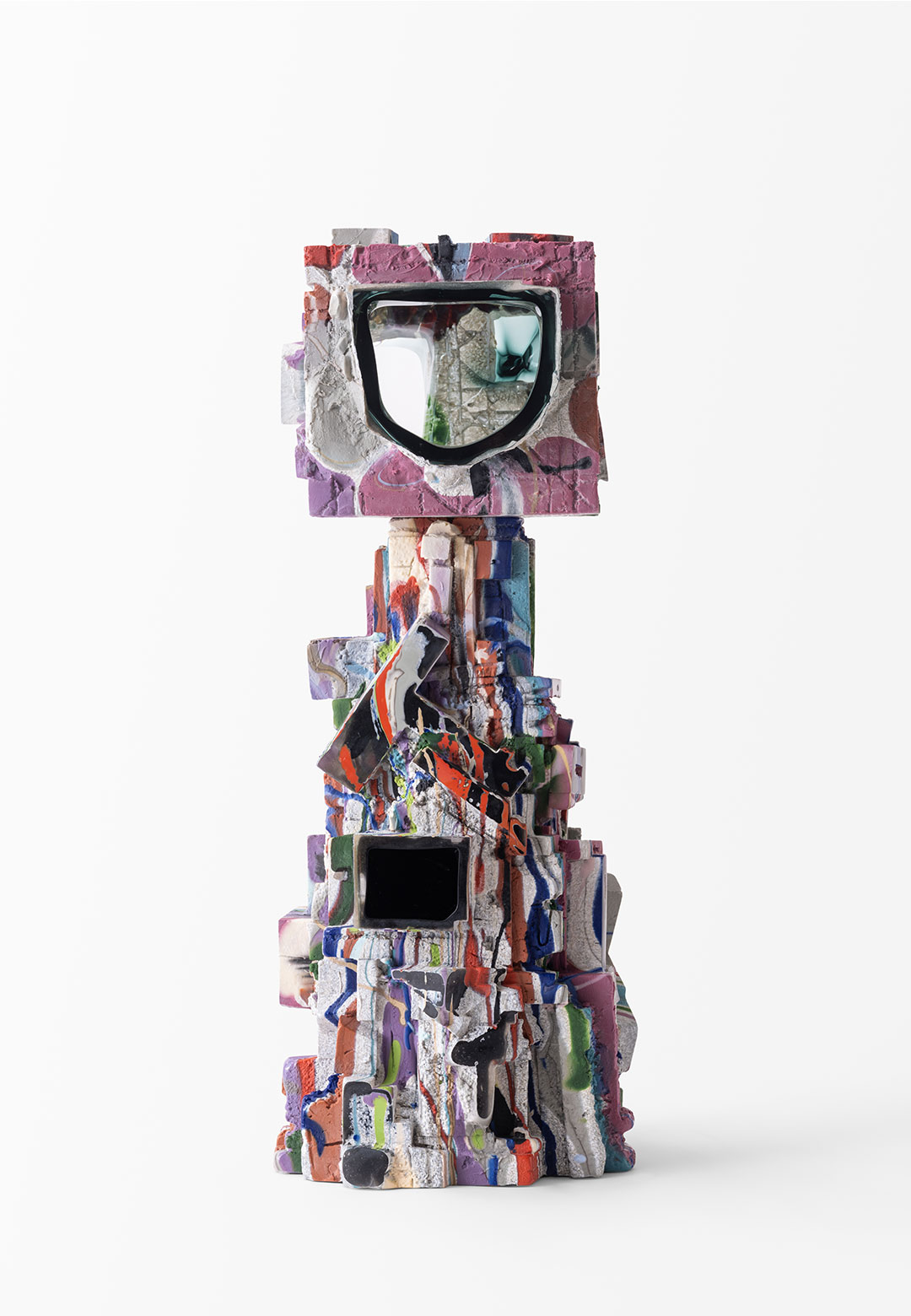Thaddeus Wolfe is a Brooklyn-based artist who erects monolithic glass sculptures inspired by visuals of both the natural world and its inhabitants, as well as his imaginations of a distinct world. This complex combination of two disparate realms, of the known and the unknown, of the comforting and the feared, come together in Wolfe’s sculpture art to form an (incoherent) abstract form that the artist refers to as an assemblage, a term borrowed from the 1950s/60s artform of the same name. These artworks comprised collages and objects made by assembling torn pieces of paper, photographs, fragments of metal, wood, stones, or shells, pieces of cloth, and much more.
The American artist’s work demands disparate accreditation. While some may view them as abstracted versions of sentient beings, others might find themselves identifying the gestures and moods being communicated through the anthropomorphic pieces. The sculptures by Wolfe, evocative of Brutalist buildings and modern art, may also be perceived by some as incomprehensible, perhaps belonging to a different realm altogether. It is, perhaps, for this reason that Wolfe’s sculptures are always untitled. He avoids associating each crafted piece with specific emotions, ideas or tangible concepts and objects. Instead, the artist invites viewers to perceive each piece through their own lens and ascribe a description of their choice.
The sculpture artist, born in Ohio, currently resides in New York, USA. He studied glassmaking at the Cleveland Institute of Art, and has, since then, dealt in crafting pieces that defy the attributes—such as an organic form, and a clear and delicate guise—typically associated with glass art. He refers to his most recent works as the Assemblage series. This series began as an exploration of mineral forms found in nature. Over the years, Wolfe’s sculptures evolved such that they now bear a distinct language. Defined by a rough texture, multicoloured infusions and a form that bears semblance to Brutalist architecture, Wolfe’s creations serve as an inspiration to glass artists who may intend to build robust, sturdy and monolithic objects with glass.
Wolfe begins his process by sculpting a form using broken Styrofoam pieces. Using this form, he generates plastic moulds for casting his glass parts. The artist uses a glass moulding process to build his sculptures, wherein each mould can only be used once. His original approach of sculpting glass is a combination of glassblowing and casting. This process enables him to achieve his uniquely textured and angled form that would otherwise have been impossible to build. In order to imbue the pieces with multiple colours, Wolfe layers different tints of glass onto a glass bubble, which is then inflated into the cavity of the heated mould. After removing the glass pieces from the mould, Wolfe carves their surface instinctually to reveal the interior strata and a different colour. The carving also gives the sculptures a textured appearance. The resulting assemblages are referred to by Wolfe as ‘part painterly, part geological.'
Despite bearing semblance to Brutalist structures, Wolfe’s sculptures also manage to escape the pigeonhole of the domineering aesthetic typically associated with Brutalist architecture. Wolfe’s sculptures make for a comfortable appearance, neither dominating nor receding in the background. They stand sure of themselves.






 Sign in with email
Sign in with email










What do you think?